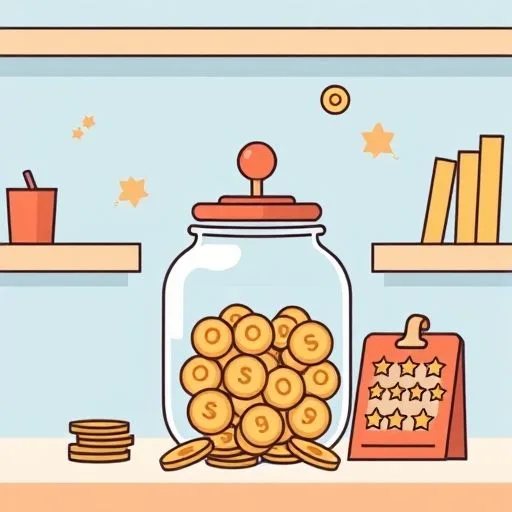
We were counting change at the kitchen table—my son’s sticky palms overflowing with coins—when it hit me. That look in your eye as you nudged the quarter towards his ‘Save’ jar. Not the bank’s interest rate, not the latest investment app, but the quiet way you showed him money isn’t just about numbers, but choices. We’ve all been there, haven’t we? Wondering how to teach value without crushing wonder, how to explain budgeting without sounding like a spreadsheet.
When the Cookie Jar Holds More Than Snacks

You remember that afternoon—when she asked for candy at the checkout, then paused. The way her eyes darted between the gummy worms and the ‘Saving Star’ chart on her bedroom wall.
That’s when it happens. We’re not teaching them to avoid splurges, but to choose. We make it real. When they see that three dollars saved equals a week of extra storytime, when they’re told that yes, we can wait for what’s better.
The most powerful lesson? It’s in those moments when you’re not saying, just showing them how to make the money jar and the heart match.
The Art of Saying ‘Not Yet’

I’ve watched you. At the grocery store, when she asked for those shiny shoes she’s outgrown twice already. You didn’t lecture, but asked, ‘What’s your plan for this?’
That’s the magic. We’re not teaching restraint, but something bigger. How to make money work for dreams. We help them sketch those tiny goals—the toy, the book, the summer camp.
Like training wheels, the allowance system works when they know the balance—that ‘earn’ comes from effort, not expectation. We’ve all felt that pride, watching them grasp the truth that their time is a currency.
The Bank Account That’s Really About Trust

That first day we walked into the bank branch—the tiny version of the piggy bank transformed into a real account. You’ve seen that look. When they realize that place isn’t just a building, but a promise.
We’re teaching them to trust the system, not fear it. Not by numbers, but by showing them—the way you explain the paycheck’s journey, not with jargon, but with stories. We make it human. We make it ‘we’—not just ‘you’.
The Mistakes We’re Grateful For

We’ve all been there—the moment they blew their allowance on a toy that broke in a day. But instead of ‘I told you so,’ remember the way you held her as she cried? Heck, I still have to remind myself to check reviews sometimes!
That’s the lesson. We’re teaching them that failure isn’t just okay—it’s the best teacher. While we’re tempted to shield them from every financial stumble, we’ve learned to let them fall.
We guide them through the regret, not to the avoidance of the mistake. We smile when they say, ‘Next time I’ll check the reviews first.’
The Future We’re Building Together

We’re not just teaching budgets or saving charts. We’re teaching them to view money as a tool, not a tyrant—as something that empowers, not controls.
We’re preparing them to face challenges. We’re doing it together—not just lecturing, but living. We’re showing them the real value of financial literacy isn’t just in the numbers, but in the freedom to dream, and the confidence to build those dreams. (Source: TrustStrategy Unveils AI Quant Upgrade with High Frequency Trading Capabilities, Globe Newswire, 2025/09/29 08:24:00)
